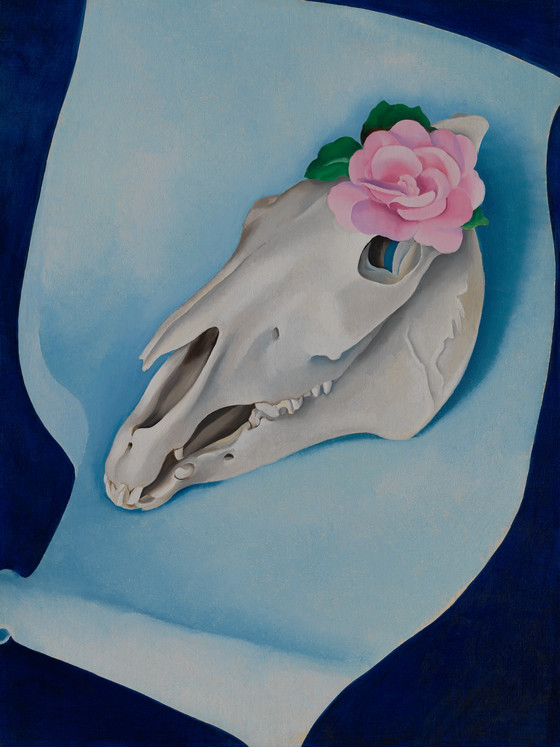Born in Wisconsin in 1887 and schooled in Wisconsin, Chicago, and New York, O’Keeffe went on to become one of the foremost artists of the first generation of American modernists as well as the first s...
Born in Wisconsin in 1887 and schooled in Wisconsin, Chicago, and New York, O’Keeffe went on to become one of the foremost artists of the first generation of American modernists as well as the first significant woman artist in 20th-century United States.
The painting is an example of her initial response to the Southwestern desert, when O’Keeffe first visited New Mexico in 1929. She quickly became entranced with the landscape. In 1921, writing from New Mexico to the New York critic Henry McBride, O’Keeffe explained that she had been collecting little and big bones – shank bones and skulls of rams, cows, and horses – that she found scattered in the desert. “When I leave the landscape,” she wrote, “it seems I am going to work with these funny things that I now think feel so much like it.” That year she began arranging the bones with artificial flowers and painting them as “a new way of trying to define [her] feeling about that country.” The works received much critical acclaim when they were first exhibited in January 1932.
Horse’s Skull with Pink Rose is a transitional painting linking O’Keeffe’s earlier flower paintings, created in New York City, and her later desert paintings. O’Keeffe’s earlier paintings, the flower paintings of the 1920s, were richly hued and erotic and created quite a stir among the critics. By 1931, however, O’Keeffe began to create softer desert flower-and-bone images that were completely different in spirit. Intending to convey the mood of the desert, O’Keeffe restricted her palette to whites, blacks, and beiges that suggested the aridness and stark drama of desert life. While the use of intense hues is still evident in Horse’s Skull with Pink Rose, O’Keeffe simplified the palette into a contrast of a few dark/light colors. The skull and flower are arranged on an abstract field of light color, thus suggesting rather than representing the desert. O’Keeffe’s fascination with bones continued throughout the decade, but later images of the skulls are juxtaposed against desert landscapes. In both early and late bone paintings the wind-bleached skulls act as modern icons of the Southwest.
This painting marks the first work by O’Keeffe in the museum’s American and modern art collection and is a fine example of her Southwestern period.
More...
